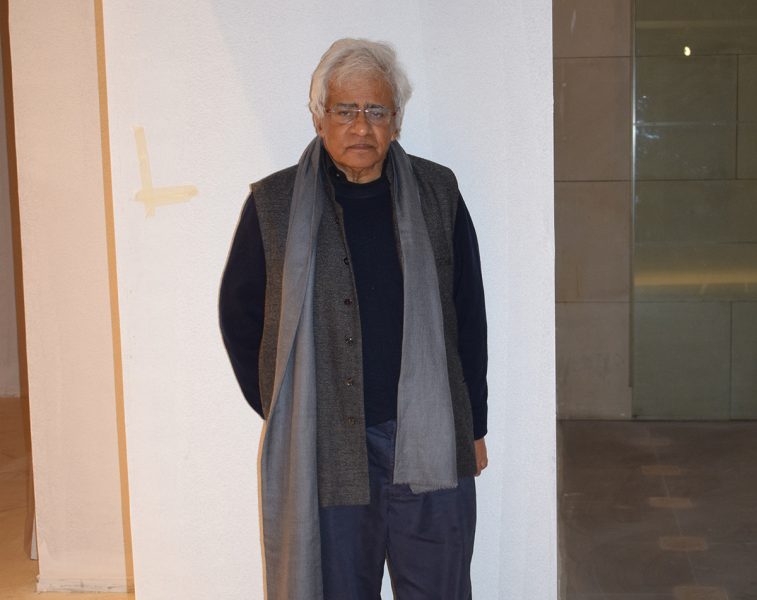
Vivan Sundaram, a seminal figure in India’s art scene, dies at 79

Vivan Sundaram, a seminal figure in the Indian contemporary art scene, has passed away at 79. Sundaram, whose multidisciplinary practice was instrumental in shaping the discourse around issues of memory, identity, and history, died on Wednesday morning, sources told The Federal. He had a long battle with pulmonary embolism, a blockage in a lung artery.
Sundaram’s parents were Kalyan Sundaram (Chairman of Law Commission of India from 1968 to 1971) and Indira Sher-Gil, sister of noted Indian modern artist Amrita Sher-Gil. He was married to art historian and critic Geeta Kapur.
Sundaram’s multidisciplinary practice spans across painting, sculpture, installation, photography, and video. He was born in 1943 in Shimla and studied at the Slade School of Fine Art in London in the 1960s. He returned to India in the 1970s and had since been at the forefront of the Indian contemporary art scene, constantly pushing boundaries and challenging conventions.
Arcs of memory, identity and history
Sundaram’s work often addresses issues of memory, identity, and history, and he was known for his ability to fuse the personal and the political in his practice. His work is deeply influenced by his upbringing and personal history, as well as by the cultural and political shifts that have taken place in India in the post-colonial era. One of his earliest series of works, titled “The Sher-Gil Archive,” is a prime example of his interest in the intersections of history, identity, and memory.
Also read: Riyas Komu interview: How art can be a site of political discourse, dissent
The series is a tribute to Sundaram’s aunt, Amrita Sher-Gil, who was a celebrated Indian painter in the early 20th century. The archive consists of photographs and documents related to Sher-Gil’s life and work, as well as Sundaram’s own paintings and sculptures that are inspired by her legacy. Through this series, Sundaram explores the complex relationship between himself, his family, and the larger historical context in which they exist, highlighting the ways in which personal histories are often entwined with broader political and cultural narratives.
Intersection of personal and political
Sundaram’s interest in exploring the intersection of personal and political histories is also evident in his series “Memorial,” which was created in response to the communal violence that took place in Mumbai in 1992-93. The series consists of photographs of makeshift memorials that were erected in the aftermath of the violence, as well as sculptural installations that incorporate found objects from the sites of the violence. Through this work, Sundaram addresses the way in which violence and trauma can be memorialized, and the role that art can play in the process of healing and remembrance.
Also read: Of veins, ink and fire: Kochi-Muziris Biennale’s fifth edition curates resistance
Another significant body of work by Sundaram is his series “Re-take of Amrita,” which consists of large-scale photomontages that combine images from Sher-Gil’s paintings with photographs of contemporary India. Through these works, Sundaram revisits Sher-Gil’s legacy and questions the ways in which it has been appropriated and reinterpreted in the decades since her death. The series also speaks to the ongoing tensions between tradition and modernity in India, and the ways in which cultural heritage is constantly being renegotiated in the present.
Art education and curatorial practice
In addition to his work as an artist, Sundaram had also been involved in art education and curatorial practice. He taught at a number of institutions, including the School of Planning and Architecture in Delhi, and curated numerous exhibitions, including the first-ever retrospective of the Indian artist Bhupen Khakhar at the Tate Modern in London in 2016. Sundaram’s contributions to the field of Indian contemporary art have been widely recognized, and he had received numerous awards and accolades throughout his career, including the Padma Shri, one of India’s highest civilian honours.
Also read: How SH Raza and Progressive Artists’ Group put India on international art map
Through his work, Sundaram challenged conventional notions of what art can be and what it can achieve, and invited viewers to engage with complex and often uncomfortable themes in new and unexpected ways. His contributions to the field of art and culture are a testament to the power of creativity and critical thinking in shaping the world around us.

